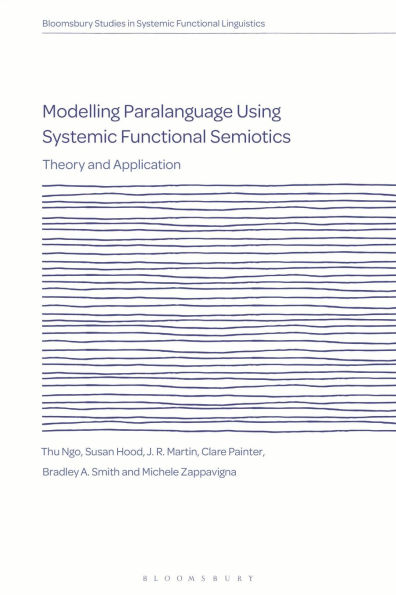Modelling Paralanguage Using Systemic Functional Semiotics: Theory and Application
This book is the first comprehensive account of 'body language' as 'paralanguage' informed by Systemic Functional Semiotics (SFS). It brings together the collaborative work of internationally renowned academics and emerging scholars to offer a fresh linguistic perspective on gesture, body orientation, body movement, facial expression and voice quality resources that support all spoken language.
The authors create a framework for distinguishing non-semiotic behaviour from paralanguage, and provide a comprehensive modelling of paralanguage in each of the three metafunctions of meaning (ideational, interpersonal and textual). Illustrations of the application of this new model for multimodal discourse analysis draw on a range of contexts, from social media vlogs, to animated children's narratives, to face-to-face teaching. Modelling Paralanguage Using Systemic Functional Semiotics offers an innovative way for dealing with culture-specific and context specific paralanguage.
1139496032
The authors create a framework for distinguishing non-semiotic behaviour from paralanguage, and provide a comprehensive modelling of paralanguage in each of the three metafunctions of meaning (ideational, interpersonal and textual). Illustrations of the application of this new model for multimodal discourse analysis draw on a range of contexts, from social media vlogs, to animated children's narratives, to face-to-face teaching. Modelling Paralanguage Using Systemic Functional Semiotics offers an innovative way for dealing with culture-specific and context specific paralanguage.
Modelling Paralanguage Using Systemic Functional Semiotics: Theory and Application
This book is the first comprehensive account of 'body language' as 'paralanguage' informed by Systemic Functional Semiotics (SFS). It brings together the collaborative work of internationally renowned academics and emerging scholars to offer a fresh linguistic perspective on gesture, body orientation, body movement, facial expression and voice quality resources that support all spoken language.
The authors create a framework for distinguishing non-semiotic behaviour from paralanguage, and provide a comprehensive modelling of paralanguage in each of the three metafunctions of meaning (ideational, interpersonal and textual). Illustrations of the application of this new model for multimodal discourse analysis draw on a range of contexts, from social media vlogs, to animated children's narratives, to face-to-face teaching. Modelling Paralanguage Using Systemic Functional Semiotics offers an innovative way for dealing with culture-specific and context specific paralanguage.
The authors create a framework for distinguishing non-semiotic behaviour from paralanguage, and provide a comprehensive modelling of paralanguage in each of the three metafunctions of meaning (ideational, interpersonal and textual). Illustrations of the application of this new model for multimodal discourse analysis draw on a range of contexts, from social media vlogs, to animated children's narratives, to face-to-face teaching. Modelling Paralanguage Using Systemic Functional Semiotics offers an innovative way for dealing with culture-specific and context specific paralanguage.
135.0
Out Of Stock
5
1

Modelling Paralanguage Using Systemic Functional Semiotics: Theory and Application
280
Modelling Paralanguage Using Systemic Functional Semiotics: Theory and Application
280Related collections and offers
135.0
Out Of Stock

Product Details
| ISBN-13: | 9781350074903 |
|---|---|
| Publisher: | Bloomsbury Academic |
| Publication date: | 12/02/2021 |
| Series: | Bloomsbury Studies in Systemic Functional Linguistics |
| Pages: | 280 |
| Product dimensions: | 6.14(w) x 9.21(h) x 0.69(d) |
About the Author
From the B&N Reads Blog
